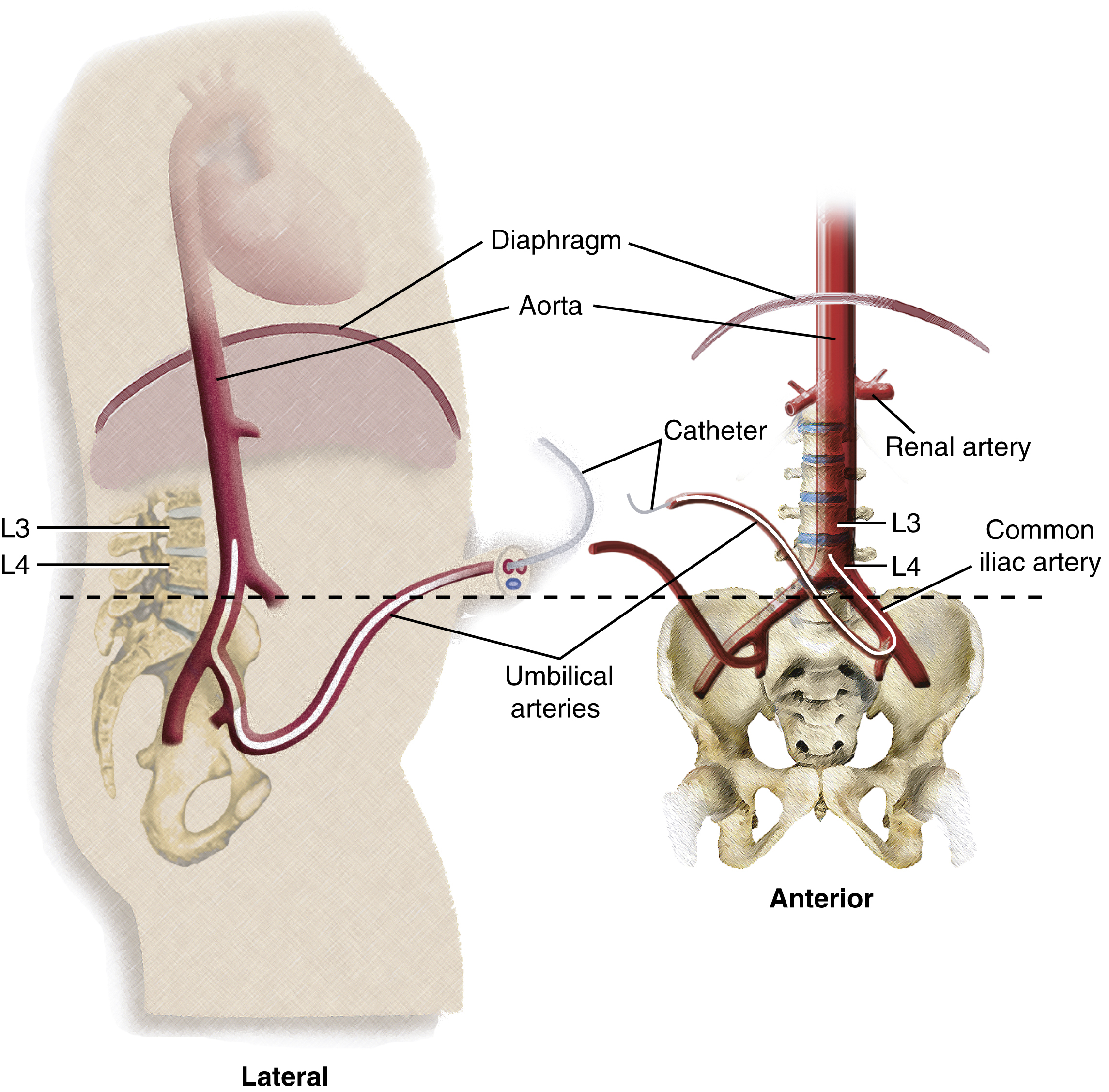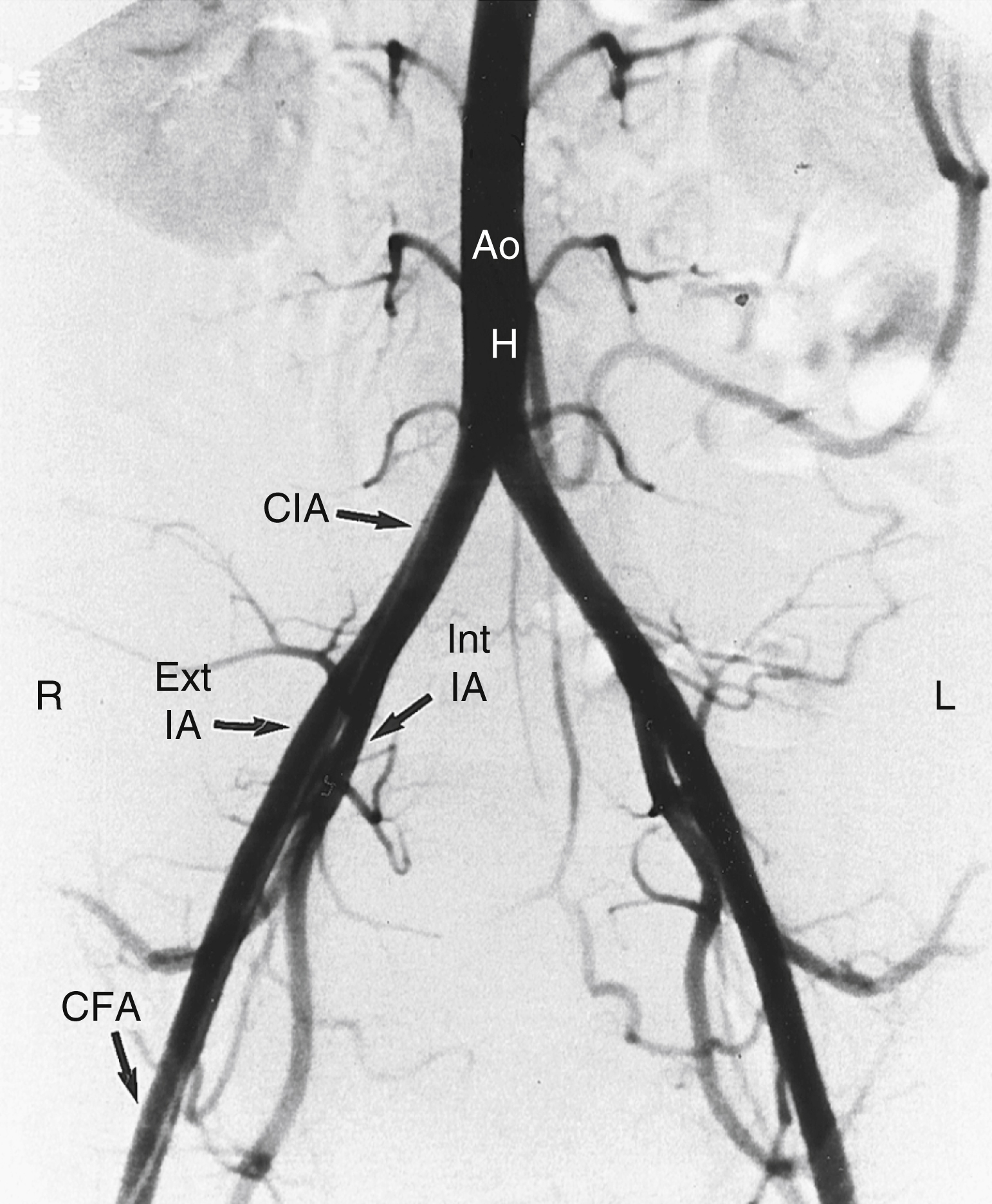Physical Address
304 North Cardinal St.
Dorchester Center, MA 02124
The rich vascular supply of the pelvis not only supports the structures contained within it, including the bladder, rectum, and reproductive organs, but also extends to the lower extremities. For a complete understanding of vascular anatomy as it pertains to the endovascular procedures of interventional radiology, it is useful to discuss the vascular structures in sections, from the bifurcation of the aorta and the inferior vena cava to the level of the common femoral arteries and veins. We also review the anatomy of the iliac vessels, including their branches, common variants, and various collateral pathways ( Fig. 42.1 ).
The abdominal aorta terminates at the bifurcation into a right and left common iliac artery. This bifurcation is usually at the lower border of the L4 vertebral body ( Fig. 42.2 ). On physical examination, this site corresponds to a point approximately 2.5 cm below the umbilicus, or at the level of a line drawn between the highest points of the iliac crests. Although the false pelvis (greater pelvis) has its superior border at the S1 level (first sacral vertebral body), it is important to consider the aortic bifurcation in any arterial evaluation of the pelvis ( Fig. 42.3 ).


Become a Clinical Tree membership for Full access and enjoy Unlimited articles
If you are a member. Log in here